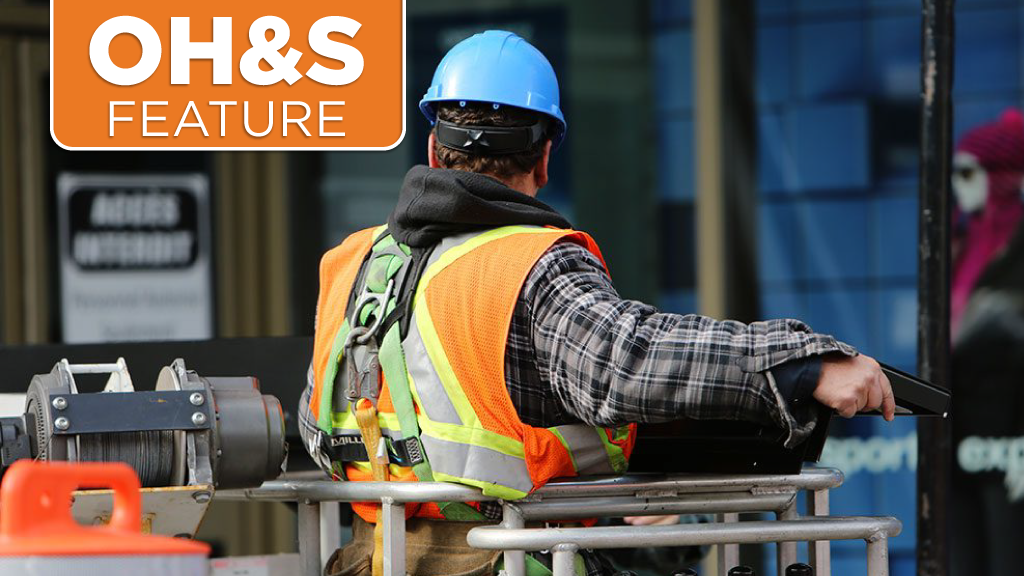Everyone in construction knows that digital communication devices, and machinery that uses digital technology, are being used more and more in the industry.
It’s also old news that they are affecting, directly and indirectly, the way buildings are designed and constructed.
Often overlooked, however, is that these same developments have had an impact on the health and safety of the people doing the work.
An increasing volume of construction is taking place off-site and then transported to and erected on the spot where the owner wants it.
“There is an accelerating trend around the world to off-site construction,” Craig Mitchell, founder of Black Box Modular Solutions and former director of innovative solutions of now-defunct Metric Modular.
“Off-site construction is synonymous with prefab and modular construction. Panelization and mass timber also fall under the umbrella of offsite construction.”
Mitchell says they all have in common that much of the work is performed in a climate-controlled, weather-protected factory and then brought to site in components or as modules and put together.
“They eliminate much of the risk of traditional construction,” he said.
Off-site construction is better for worker safety in several significant ways, says Mitchell:
- It’s easy to control the movement of workers in and out of the factory. That, and the ability to monitor their health, is especially important during the current pandemic;
- Workstations can be set as far apart as necessary, for better control of social distancing;
- Better sanitary conditions than at traditional construction sites;
- More work is done at ground level rather than high above the ground; and
- In a factory, any roof work requires fall restraints.
Off-site construction is also a way of dealing with another problem that bedevils the construction industry.
“There’s a shortage of skilled trades workers in not just B.C. and Canada, but around the world,” said Mitchell. “In many countries young people are not interested in going into the trades.”
Helen Goodland, head of research and innovation at Black Box Modular Solutions in Vancouver, says there is anecdotal evidence from some construction companies, especially the larger ones, that adoption of technology has made their operations safer.
“The big companies are the ones making the largest investments in innovation and technology, but so far it’s hard to quantify their impact on health and safety,” said Goodland.
Two technical innovations that will have an impact on construction health and safety in the future, she says, are wearable technologies and exoskeletons. Neither of them has arrived yet, but they’re on their way, and will become used widely once they’re understood and their price has come down, just like the other technologies that were once curiosities and are now taken for granted.
Construction wearables — worn on the body, clothing or personal protective equipment — collect and deliver data about the worker’s environment, activities and biometric conditions.
The technology can detect and warn a worker of the potential for injury or reduce the seriousness of an injury when one occurs.
There are visual, tactile and sensing wearables:
- Visual wearables use optical aids in or on glasses, visors and hard hats that produce images that can be seen by the wearer or remote viewers.
- Sensing wearables can sense a worker’s biological, environmental and physical conditions. It can warn the employee of hazardous situations that can lead to an injury.
- Tactile wearables work as an exoskeleton to increase the user’s strength and durability.
Exoskeletons, or exosuits, are metal frameworks fitted with motorized muscles. The frameworks are modeled on the wearer’s internal skeletal structure.
Exosuits augment human motion to allow for more lifting strength and for improved performance of such repetitive tasks as squatting, bending or walking,
When used properly, they makes lifted objects feel lighter, reducing fatigue and injuries.
In addition to reducing deaths and injuries, innovation and technology that improves work site safety has other, less obvious benefits.
“Investment in technology should be considered strategically,” said Goodland. “Although most companies appreciate the operational importance of safety — and how it can keep insurance claims down — there is no question that the industry’s safety record is linked directly to its reputation.”
Goodland says because safety is one of the elements of corporate social responsibility, which is important to young people, it can be used as a human resources management strategy for hiring, improving organizational commitment and retaining employees.
“Make it easier for construction to recruit young workers who are looking for a satisfying career in an industry they feel good about and they’re proud to tell their friends about,” said Goodland.



Looking modular factory automated equipment in Ontario new or used. Do you have connections to such company’s?